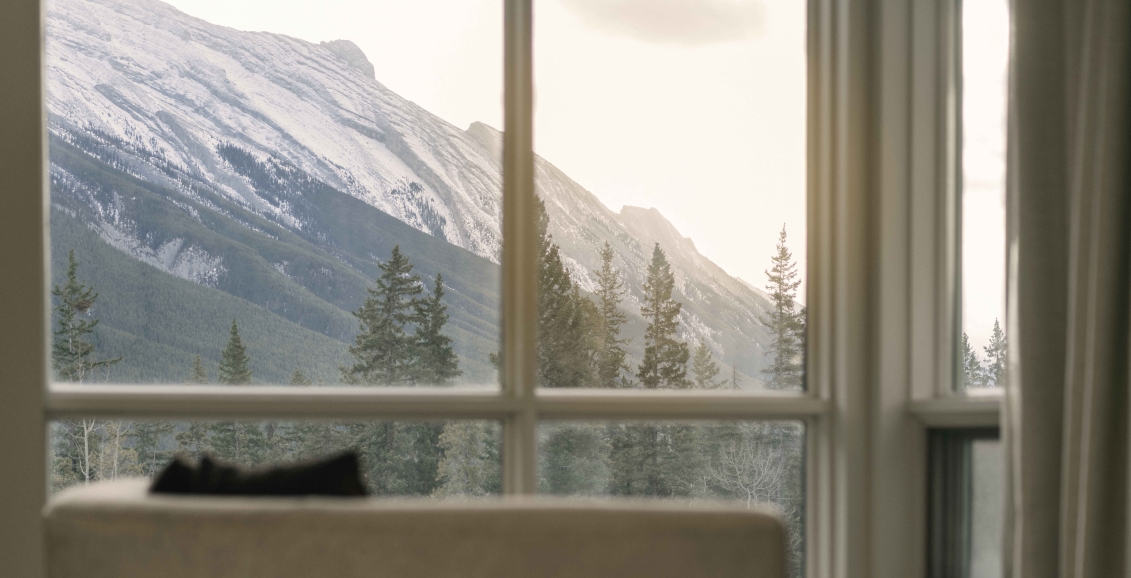Unlock your Summer Getaway
Make it a summer to remember with our Chill Now Summer Later Offer.
Be among the first to experience the transformation with 25% off summer 2026 stays, plus an additional 5% off for ALL loyalty members.
Make it a summer to remember with our Chill Now Summer Later Offer.
Be among the first to experience the transformation with 25% off summer 2026 stays, plus an additional 5% off for ALL loyalty members.
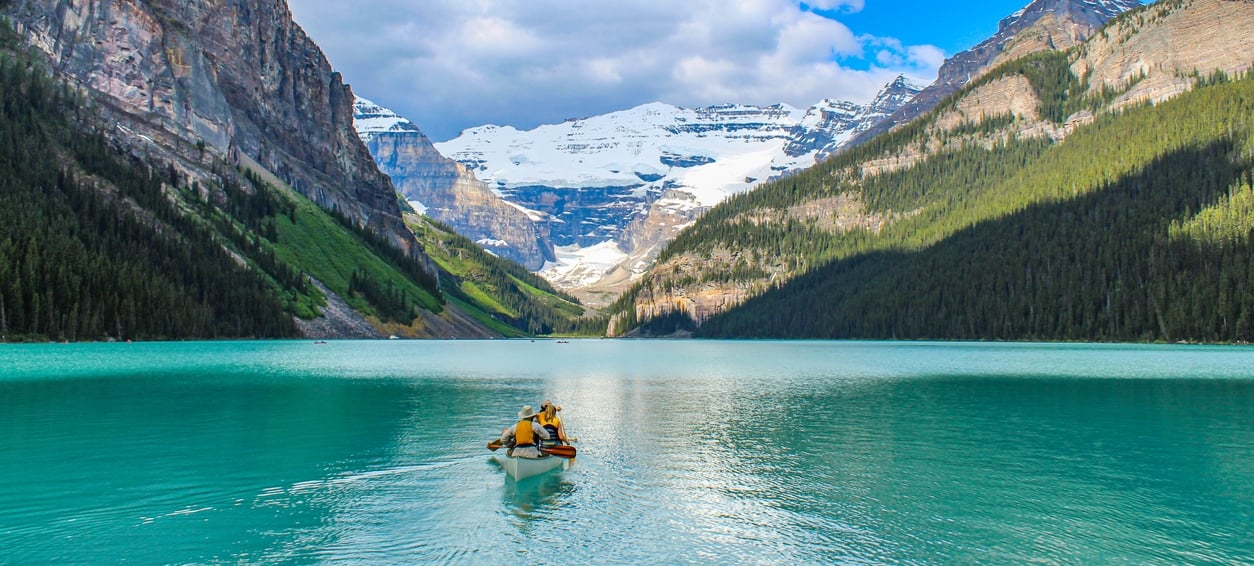
Castle hotels, gondola selfies and glacier-fed lake obsessions might be what draw people to Banff today, but it all started when three railway workers stumbled onto something hot near Sulphur Mountain. That accidental discovery in 1883 set off Canada’s national park story, complete with mineral springs, big ambitions and a view that would launch a thousand postcards.
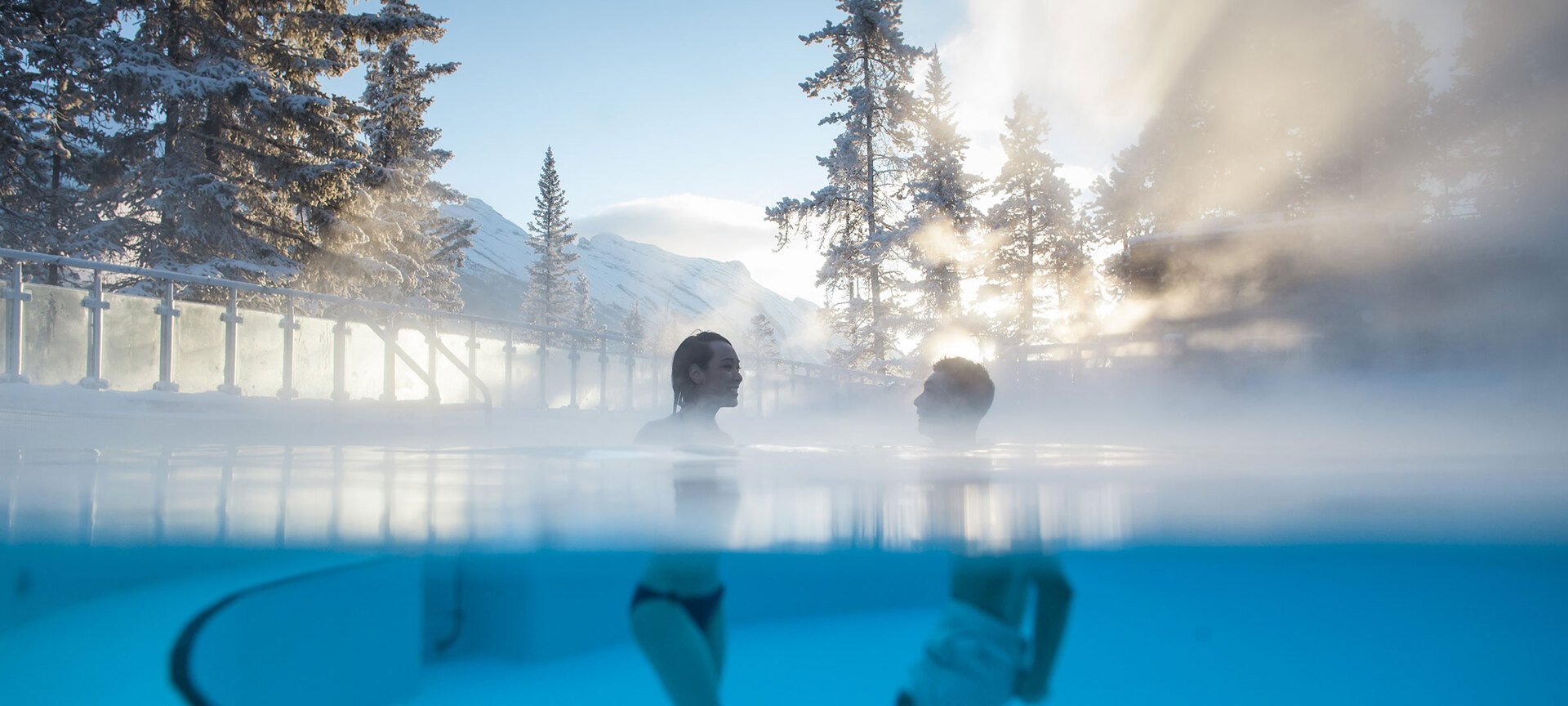
Legend has it that those same railway workers were exploring the lower slopes of Sulphur Mountain in late October 1883 when they noticed steam rising from the ground. Intrigued, they followed it to a rocky outcrop where warm mineral water was bubbling from a hidden cave. Using a fallen tree as a makeshift ladder, they climbed through the skylight entrance and found themselves inside what would become one of Canada’s most famous natural wonders.
News of the discovery spread fast and within two years the federal government stepped in. By 1885, a 26 square kilometer reserve was established, marking the birth of Canada’s first national park and only the third in the world. Luxury travel was in. Mountain climbing in skirts was apparently in. And Banff was officially on the map.
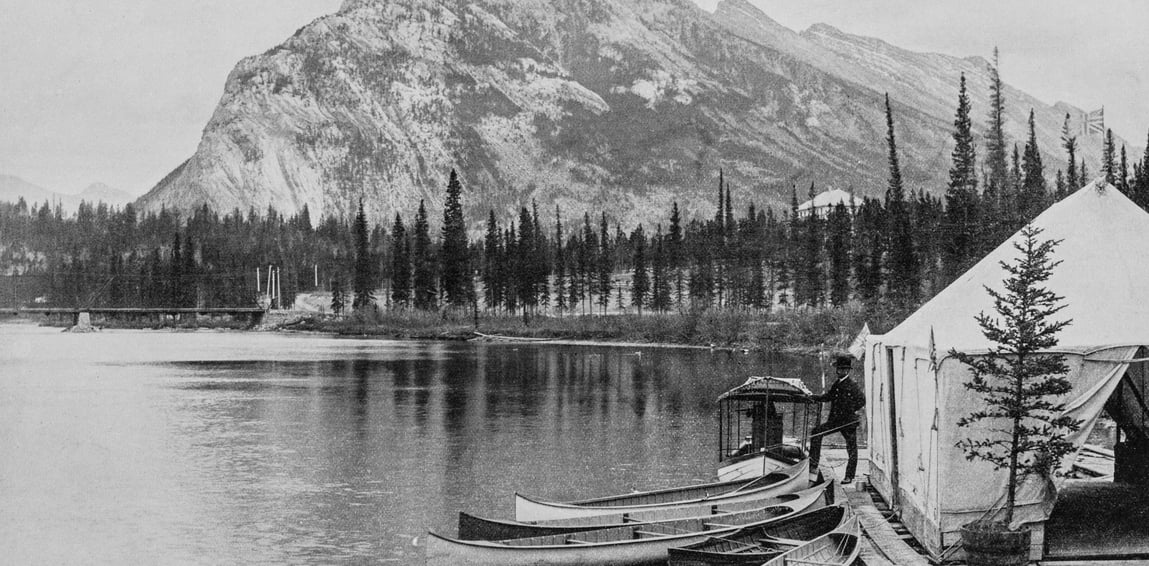
The Canadian Pacific Railway saw Banff’s potential and leaned all the way in. Their grand plan was to draw elite travellers from Europe and across North America to experience the rugged beauty of the Canadian Rockies, with a side of gold service. That plan took shape in 1888 with the opening of the now-iconic Banff Springs Hotel, styled like a Scottish castle and perched dramatically above the Bow River.
Today, Banff Springs still stands as one of Canada’s most storied hotels, and it just so happens to be our sister property. The spirit of refined mountain adventure that started there continues at The Rimrock Banff, just up the slope on Sulphur Mountain.

While the Banff Springs was turning heads down in the valley, another story was quietly unfolding higher up the mountain, just steps from the hot springs that started it all.
In 1895, Francis Sydney Beattie opened a modest six-room hotel beside the steaming pools of the Upper Hot Springs. After a fire, it was rebuilt and renamed the Hot Springs Hotel, quickly earning a reputation for wellness, hydrotherapy, and the now-famous Banff Cure.
Dr. Bevan Ashton took over in the early 1900s and leaned fully into hot spring therapy, even writing The Banff Cure, A Cure by Water. By the 1930s, the federal government took over the lease across the street and built the public bathhouse that still welcomes soakers today. Think plunge pools, private tubs, and sweeping alpine views — all before wellness was a thing.
In 1959, John Pawluk reimagined the site with more rooms, a rooftop deck, and the kind of views that make people cancel their afternoon plans. Over the decades, it evolved into today’s 333-room Rimrock, tucked into the forested slope of Sulphur Mountain and directly across from those still-steaming springs.
That bathhouse is still going strong. And now, Rimrock is getting ready for its next chapter. As the first Emblems Collection property in North America, it will begin a full transformation in Fall 2025 and reopen in Summer 2026.
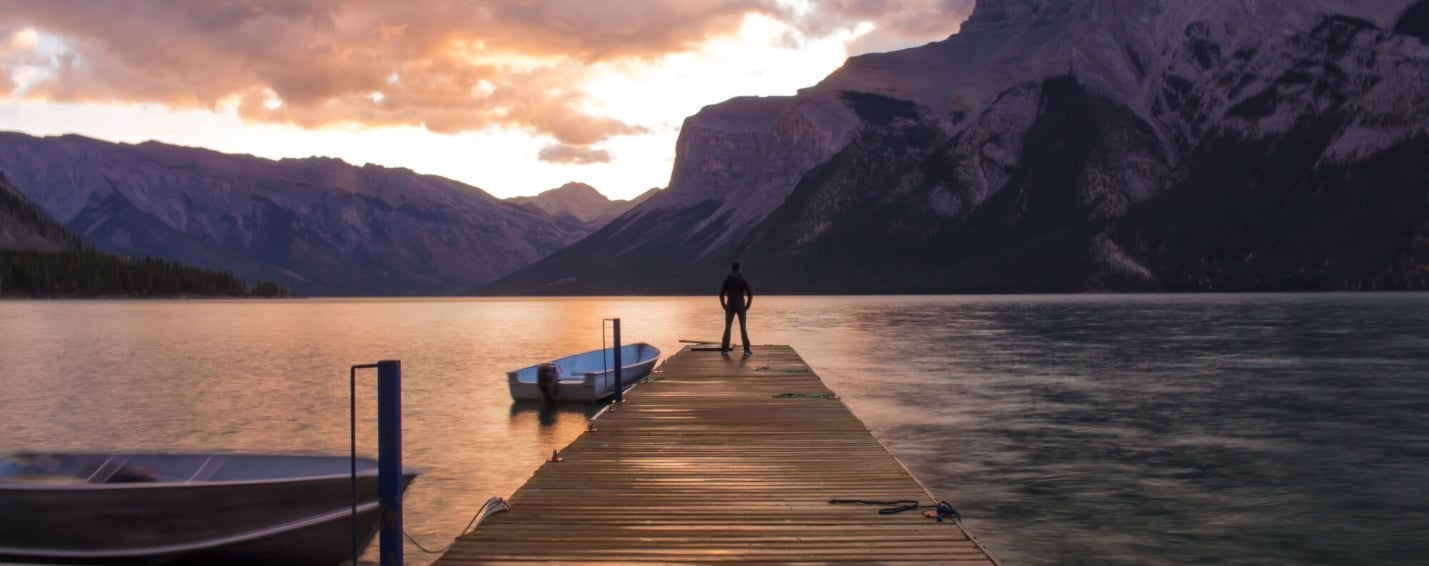
Since those first steps toward preservation in 1885, Banff National Park has grown into one of the most recognized and visited national parks in the world. Covering more than 6,600 square kilometres of protected wilderness, the park is home to grizzly bears, glacier-fed lakes, jagged peaks and some of Canada’s most iconic experiences. From scenic drives along the Icefields Parkway to sunrise canoe paddles on Lake Louise, Banff offers a little something for everyone—and it all started with a plume of steam and a bit of curiosity. It’s also a UNESCO World Heritage Site, recognized for both its natural beauty and cultural significance. Whether you’re skiing down the slopes, hiking through alpine meadows or riding the Banff Gondola, you’re experiencing a legacy that’s over 140 years in the making.
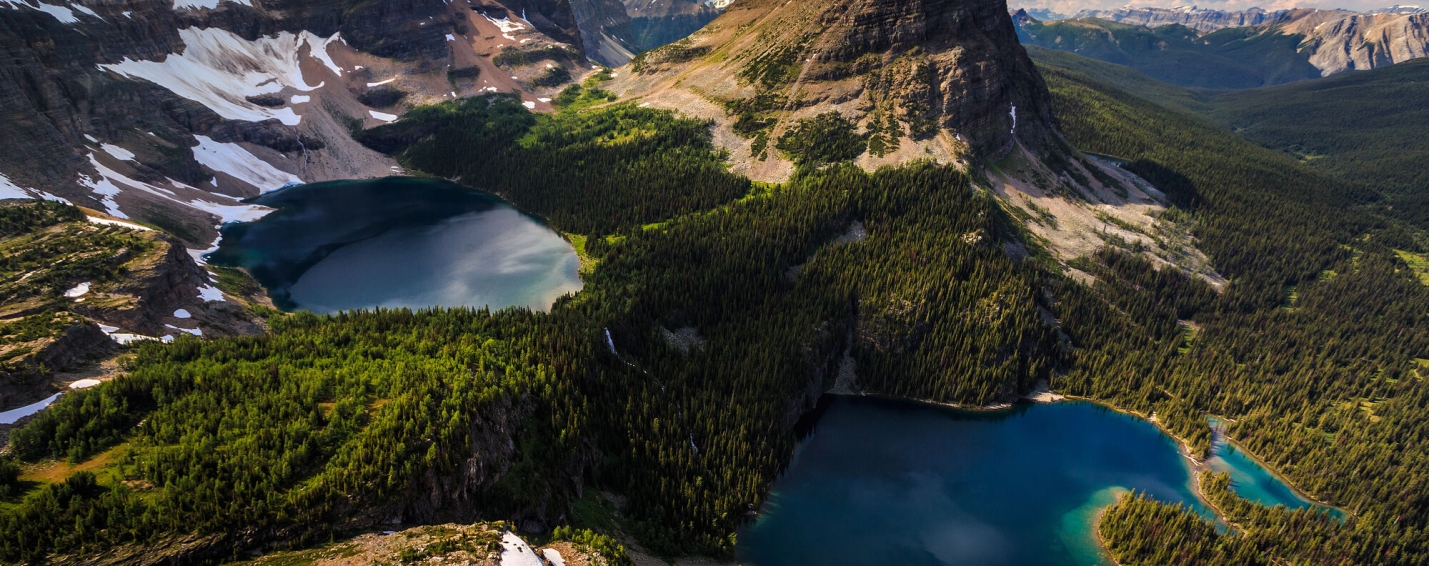
We acknowledge that Banff National Park is within the present-day territories of Treaty 6, 7 and 8, as well as the Metis Homeland. The lands and waters of Banff National Park have been used for millennia by Indigenous Peoples for sustenance, ceremony, trade and travel. We thank them for their continuous stewardship and for sharing the land with us.
For thousands of years, Indigenous Peoples have called the foothills and forests of the Rocky Mountains home. They hunted bison and other large game, practiced traditional trapping, and fished the rivers and lakes. The region now known as Banff National Park also held deep spiritual significance: healing was sought in the natural hot springs, and medicinal plants of the area were harvested.
Following the creation of Banff National Park, a policy was developed that excluded Indigenous Peoples from national parks and prohibited traditional practices like hunting and gathering. Over the past 50 years, this policy has been reversed – and today, Parks Canada is working with Indigenous groups to foster deeper connections and commemorate Indigenous histories and cultures within the park.
Visitors interested in a deeper understanding of Banff and its heritage – including stories of Indigenous Peoples – can visit The Whyte and Parks Canada.
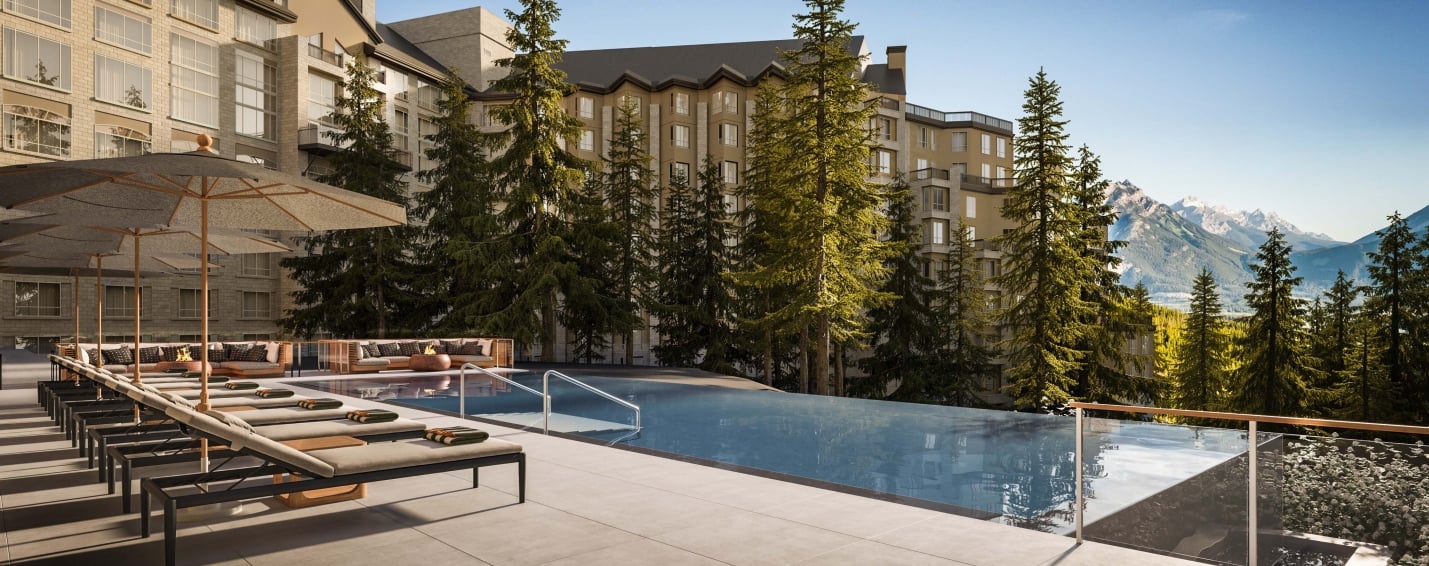
Banff’s legacy continues to evolve. What started with a curious discovery in the mountains has become a globally recognized symbol of nature, adventure and connection. And while the castle hotels, gondola selfies and glacier-fed lake obsessions are still going strong, the heart of Banff remains what it’s always been — a place shaped by awe, curiosity and the people who continue to care for it.
Whether you’re soaking in the Upper Hot Springs, hiking a larch-lined trail or checking in to Rimrock for a few days of elevated mountain living, you’re part of a story that’s still unfolding. One view, one visit and one moment at a time.
